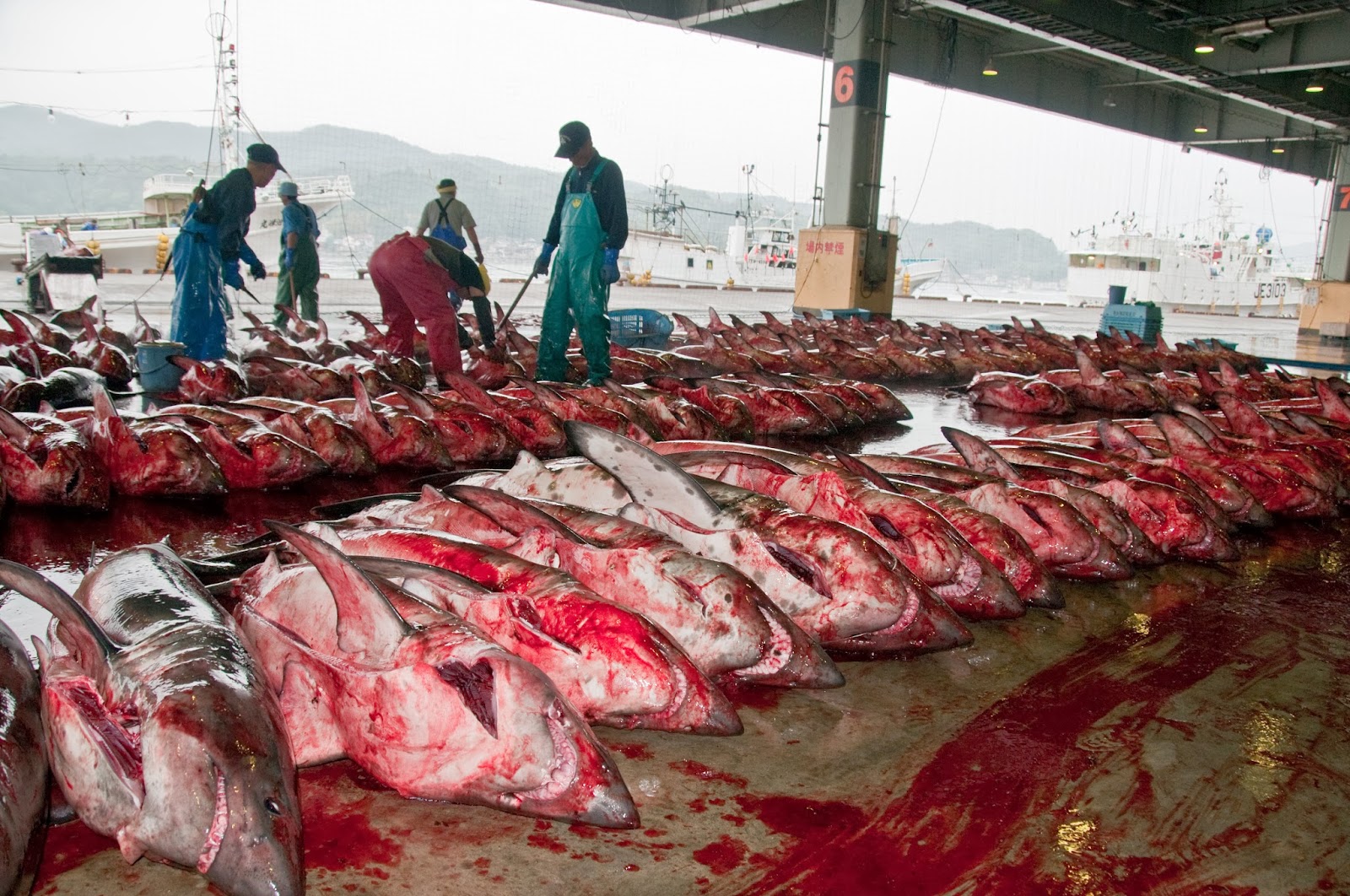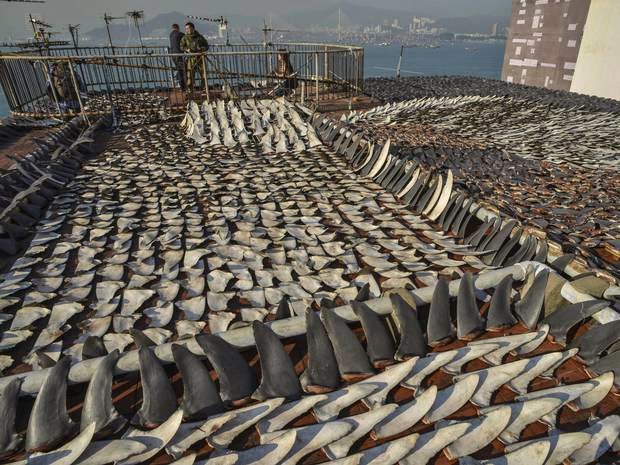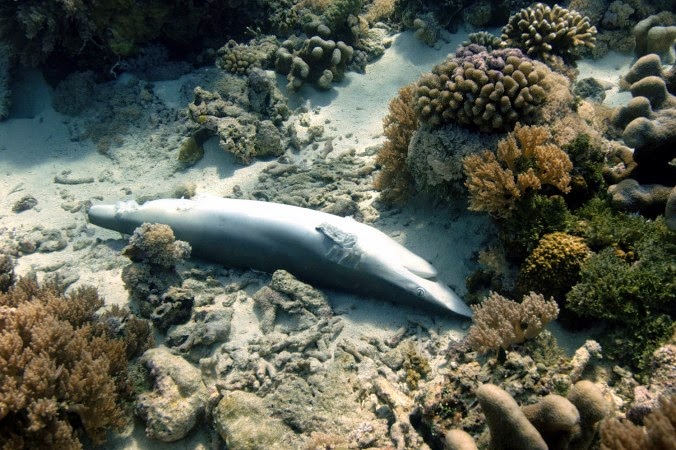A big part of the problem in conserving sharks is that we don't understand them. We see them as a threat and of no real benefit.

My interest in sharks was
like everyone’s – morbid. A shark attack with photos was front page news and
each sparked debate in the dive clubs over the best way to avoid becoming the
next victim. I sometimes carried a ‘bang stick’ so I could fight these villains
if it came to the worst.
When I started work on the
Great Barrier Reef back in the '70's, I got a surprise. The sharks seemed bigger, more numerous,
and very brave compared to their Caribbean brothers. Australian shark attacks
were front page stories and dominated the news for days.
And yet there I was working
for hours every day, year after year within metres of these predators and all I
had to do to avoid trouble with the tropical species was respect their
territories and not swim around with speared fish on my belt.
The November issue of
Conservation Biology published a review of media coverage of sharks. According
to Meredith Gore, MSU assistant professor of fisheries and wildlife, Australian and U.S. news
articles were more likely to focus on negative reports featuring sharks and
shark attacks rather than conservation efforts. "The most important aspect
of this research is that risks from - rather than to -- sharks continue to
dominate news coverage in large international media markets," said Gore.
So how real is the case against sharks?
Every year about 100
shark attacks are reported worldwide. In 2011,
just 17 fatalities were recorded as having being caused by sharks, out
of 118 attacks. Although shark attacks
are infrequent, there is a heightened awareness due to occasional serial
attacks; “it’s out there and it’s after me”. Horror fiction like Jaws appears on TV just often enough to
keep this fear alive and even “nature” shows only show sharks in frenzied
feeding.
Shark attack experts are adamant that the danger has been greatly
exaggerated.
According to the International Shark Attack File (ISAF), between the years 1580 and 2011 there were 2,463
confirmed unprovoked shark attacks around the world, of which 471 were fatal. Surprisingly,
that’s only 1.09 fatalities per year for the last 431 years.
Australia is ranked
second in terms of global shark attacks with 877 attacks since colonial
settlement in the 18th century; it’s ranked the highest in terms of
shark fatalities, with only 217 during this long period.
According to Time/ CNN
: Zoologists today estimate elephants around the world kill 500 people a year
while the great white sharks (Jaws) kill only 4 people.
Incredibly,
there are about 24,000 lightning deaths (one every 20 minutes) and 240,000
injuries worldwide annually (Royal
Aeronautical Society, 2003). When was the last time we read stories of
the lurking danger above or watched a movie where people were struck down like
dominoes by searing thunder bolts?
Why is shark conservation so important and why is it being
neglected?
The first part of this question is
easy. Sharks are in big trouble. "Overfishing of sharks is now recognized
as a major global conservation concern, with increasing numbers of shark
species added to the International Union for the Conservation of Nature's list
of threatened species," say Mizue Hisano, Professor Sean Connolly and Dr
William Robbins from the ARC Centre of Excellence for Coral Reef Studies and
James Cook University.
On March 1, 2013, "Global Catches,
Exploitation Rates and Rebuilding Options for Sharks," was published by
Dr. Worm and other researchers from Dalhousie University, the University of
Windsor in Canada, as well as Stony Brook University in New York, Florida
International University (FIU) in Miami and the University of Miami. A very
powerful team indeed.
Their shocking findings put the carnage at
97 million in 2010. The possible range of mortality is between 63 and 273
million annually. This equates to somewhere between 7,200 and 31,000 sharks per
hour.
Now in
March, 2013; "This is a big concern because the loss of sharks can affect
the wider ecosystem," said Mike Heithaus, executive director of FIU's
School of Environment, Arts and Society. "In working with tiger sharks,
we've seen that if we don't have enough of these predators around, it causes
cascading changes in the ecosystem, that trickle all the way down to marine
plants." Such changes harm other species, and destroy commercial
fisheries, Heithaus explains.
Why we are
neglecting shark conservation is harder to answer. First, there have been
powerful economic reasons to turn a blind eye to shark fishing and shark finning.
These may not have been good reasons but greed is a characteristic of human
behaviour and we make lots of poor decisions because of it.
A second
explanation comes from deep in the primitive part of our brains. Our
prehistoric ancestors had the very same fears that we do according to Psychology Today. We were ‘designed’ to
be afraid; fear was our operating manual for things we didn’t understand or
that could do us harm. Fears protected our ancestors.
“Our distant ancestors who were afraid of heights didn’t fall off cliffs, those
that feared wild animals didn’t get eaten, those that ran the fastest left the
rest behind---and they survived.”
Surveys of people show different fears for different cultural
groups but amazingly many fears are of animals never encountered by the people
who fear them. Top of the list is spiders and number 10 are alligators and
crocodiles. Sharks come in at number six according to Animal Planet.
Elephants are
not on our list of feared animals and we donate millions of dollars each year
to protect them even though they kill thirty times more people than sharks. Why
can’t we see that the health of our ocean hangs in the balance and that we are
making decisions with our ancestor’s fears and not with our future in mind?
This report is based on similar articles by myself published in Epoch Times. It is posted here for educational purposes only. I wish to thank my friends Ellen Cuylaerts and Shawn Heinrichs for their amazing photos.
http://youngmarinescientist.blogspot.com/
http://geraldgoeden.blogspot.com/
http://goedensnews.blogspot.com/
http://goedenquotes.blogspot.com/
http://gerrygoeden.blogspot.com/
http://goedenscience.blogspot.com/
http://goedenmarineecology.blogspot.com/
http://gerryquotes.blogspot.com/
http://einsteinsnature.blogspot.com/
http://einsteinsnature.blogspot.com/
http://underwaterinternet.blogspot.com/
















.jpg)










.jpg)




